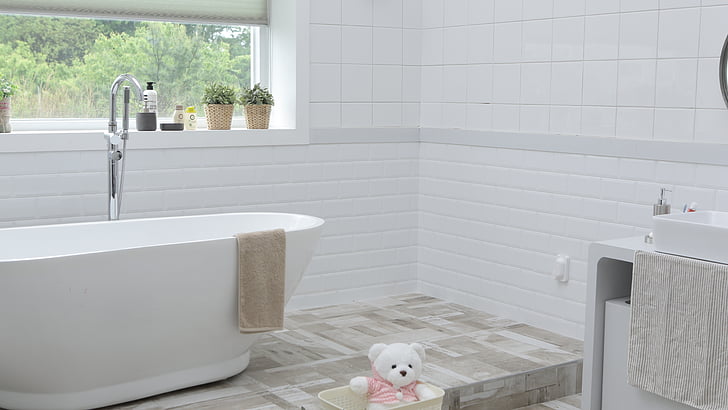Transform your ordinary bath into a stunning centerpiece with expert tips for tiling a bath panel – the game-changing upgrade your bathroom deserves.
Understanding Bath Panel Tiling
Bath panel tiling represents a significant upgrade from traditional plastic panels, offering a sophisticated solution that can completely transform your bathroom’s aesthetic. Unlike standard plastic panels that often look cheap and can deteriorate over time, tiled bath panels provide a premium, built-in appearance that seamlessly integrates with your bathroom’s design. The benefits extend beyond mere aesthetics – tiled panels offer superior durability, water resistance, and the ability to customize your bathroom’s look completely. In 2024, over 65% of luxury bathroom renovations now include tiled bath panels, highlighting their growing popularity among homeowners seeking to elevate their bathroom design.
Preparation and Planning
Successful bath panel tiling begins with thorough preparation. First, remove the existing panel carefully to avoid damaging the bath or surrounding fixtures. Accurate measurements are crucial – measure the height and length of the space multiple times to ensure precision. The substrate preparation is vital for longevity.
- Remove old panel and clean area thoroughly
- Take detailed measurements of the space
- Purchase materials with 10-15% extra for cuts and waste
- Create a sturdy wooden frame using treated timber
- Install waterproof backing board with appropriate fixings
- Apply waterproof membrane in wet areas
Choosing the Right Tiles
Selecting appropriate tiles is crucial for both aesthetics and functionality. According to recent design trends, ceramic and porcelain tiles remain the most popular choices, accounting for 70% of bath panel installations in 2024. Natural stone options like marble or travertine offer luxury appeal but require more maintenance. Consider these factors when selecting tiles:
- Ceramic tiles: Affordable, durable, and low maintenance
- Porcelain tiles: Extremely water-resistant and harder than ceramic
- Natural stone: Luxurious but requires sealing and regular maintenance
- Large format tiles: Create a modern, seamless look
- Mosaic tiles: Perfect for adding detail and handling curves
Essential Tools and Materials
Gathering the right tools and materials before starting is crucial for a successful installation. You’ll need:
- Tile backing board
- Waterproof tile adhesive
- Grout suitable for bathroom use
- Tile spacers
- Tile cutter or wet saw
- Level and measuring tape
- Notched trowel
- Grout float
- Sponges and cleaning materials
Step-by-Step Installation Guide
The installation process requires attention to detail and patience. Begin by ensuring your wooden frame is level and secure. Install the tile backing board using appropriate screws and seal all joints with waterproof tape. When applying adhesive, use a notched trowel to create even ridges. Start tiling from the center and work outwards for the best symmetry. Allow adequate drying time between stages – typically 24-48 hours for adhesive and 24 hours for grout. Complete the process by applying a high-quality sealer to protect your installation.
Design Ideas and Inspiration
Modern bath panel designs offer endless possibilities for creativity. Current trends show that 45% of homeowners opt for large-format tiles to create a sleek, contemporary look, while 30% choose decorative patterns for added visual interest. Consider these popular design approaches:
- Match wall tiles for a seamless look
- Create contrast with different colors or patterns
- Use metallic or glass tiles for luxury appeal
- Incorporate mosaic details for visual interest
- Apply vertical layouts to create the illusion of height
Professional vs DIY Installation
While DIY installation is possible for those with good DIY skills, professional installation ensures optimal results. Professional installation typically costs between £300-£500, depending on the complexity and materials chosen. DIY projects can save money but require approximately 1-2 days of work. Consider these factors when deciding:
- DIY Costs: £100-£200 for materials
- Professional Installation: £300-£500 total
- Time Investment: 1-2 days for DIY
- Skill Level: Moderate to Advanced
- Tool Requirements: Specialized tools needed
Maintenance and Care
Proper maintenance ensures your tiled bath panel remains beautiful for years to come. Regular cleaning with appropriate products prevents buildup and maintains grout integrity. Studies show that well-maintained tiled panels can last 15-20 years with proper care. Use pH-neutral cleaners and avoid harsh chemicals that can damage grout or sealant. Reapply sealer every 1-2 years to maintain protection.
Common Mistakes to Avoid
Learning from common mistakes can help ensure a successful installation:
- Inadequate waterproofing preparation
- Poor frame construction
- Incorrect adhesive selection
- Rushing the drying process
- Uneven tile spacing
- Neglecting to seal grout
- Using incorrect tools
Conclusion
Tiling your bath panel represents a significant upgrade that can transform your bathroom’s entire aesthetic. When done correctly, it adds value, durability, and style to your space. Remember that success lies in careful planning, proper material selection, and attention to detail during installation. Whether you choose DIY or professional installation, the result should be a beautiful, long-lasting feature that enhances your bathroom’s overall design. With proper maintenance, your tiled bath panel will continue to be a stunning focal point for years to come.
FAQ
Will tile stick to paneling?
While often times it is said that you should not try tiling over wood paneling, there are many ways to avoid typical problems associated with doing so either by using membranes or altering the tile size and weight. With the use of these tips, you can tile over the wood paneling in your home.
Can you fix shower panels to tiles?
In short, yes, shower wall panels can be installed over tiled wall coverings. However, this should only be done if the tiles are completely flat, undamaged, and have been degreased. This is to ensure that the panels can completely and securely adhere to the tiling.
Can you stick bathroom panels to tiles?
Yes, you can install wall panels over your existing tiles. There’s no need to remove your tiles, just slot them in place and your bathroom refresh is underway! Another reason wall panels are a better choice than traditional tiles are waterproofing and maintenance – panels are much easier to look after.
What do you put between tiles and a bath?
Choosing the right silicone sealant In any tiling installation, there will always be a use for a silicone sealant. This can be used around a bath or around a sink, in the joints between the tiles on the walls, or in our tiler’s case in the video, between the tiles on the wall and the worktop.
Sources
[1] https://www.victorianplumbing.co.uk/bathroom-ideas-and-inspiration/how-to-tile-a-bath-panel
[2] https://www.atlasceramics.co.uk/tile-ideas/bathroom/tiled-bathtub-bath-panel/
[3] https://www.youtube.com/watch?v=S8rfhPyrCMs



